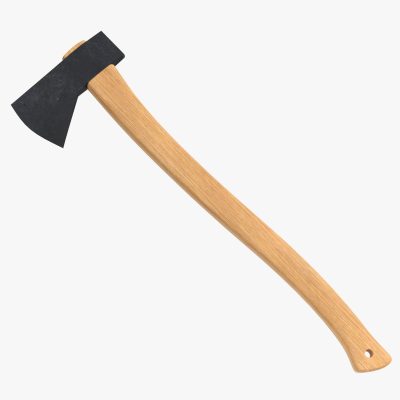Project Report For Axe Manufacturing
Introduction
Project Report for Axe Manufacturing is as follows.
The axe is a millennia-old and ubiquitous tool used to shape, split, and cut wood, harvest timber, as a weapon, and as a ceremonial or heraldic symbol. The axe comes in a variety of shapes and sizes, but it generally consists of an axe head and a handle, or helve.
A wooden handle of some kind is typically affixed (hafted) to the stone head of the oldest examples of axes in a way that is suited for the use and materials available. As these technologies advanced, axes made of copper, bronze, iron, and steel appeared. This reduces the amount of effort required by the wood chopper. The pression splits the wood into two pieces.

Types Of Axe Manufacturing
- Axe Tactical: The tactical axe is a modern invention that functions as a multi-tool. This axe, also known as a tactical tomahawk, is popular among law enforcement officers, soldiers, and security personnel, as well as survivalists. This axe’s primary function is chopping, but it can also be used as a close-range weapon, a shovel, a pry bar and a hammer. It’s perfect for camping trips because it can assist with cooking, chopping wood for campfires, and digging holes. These axes are typically made of steel, giving them the strength to handle a wide range of tasks.
- Axe Felling: These axes are made specifically for felling trees and chopping wood logs. A felling axe’s head will weigh between two and four pounds and will be attached to a long handle. This long handle allows the user to make a more powerful swing with more leverage, resulting in a better cut. Traditionally, the handles are made of strong hickory wood. For maximum strength, the grain of the hickory should follow the handle lengthwise and curve along with it.
- Axe Broad: A broad axe is sometimes referred to as a hewing axe since its main application is the process of hewing, which turns round-edged timber into flat-edged timber. This was a common type of carpentry before the advent of industrial sawmills. One side of this axe is flat to aid in hewing, while the other has a broad bevelled edged blade for chopping. It is a medium-sized hand tool that is mostly used by carpenters and is rarely seen in common use.
- Axe Pick: A pickaxe is a hand tool with a “T” shape. It has a double metal head on top of a wooden or fibreglass handle. Traditionally, the pick would be on both sides of the head; however, modern pickaxes typically have a pointed pick on one side and a chisel on the other. The pick end may occasionally be completely straight or may have a slight curve to it. A pick axe is a helpful tool for gardening and landscaping that is primarily used to break up hard soil, rocks, or concrete. In contrast, a chisel is frequently used to pry open cracks in the ground or spaces between rocks. Additionally, the chisel acts as a weight to balance the axe.
Project Report Sample on
Axe Manufacturing
Get Completely Custom Bankable Project Report
Market Potential for Axe Manufacturing
The market for hand tools was valued at US$ 16,123.3 Mn in 2019 and is anticipated to grow at a CAGR of 3.9% from 2020 to 2027 to reach US$ 21,929.0 Mn.
The market’s expansion is attributed to an increase in infrastructure projects for both commercial and residential buildings, the use of hand tools by households for domestic and do-it-yourself projects, expanding manufacturing facilities, and rising repair and maintenance activities globally.
However, the incorrect use of hand tools and issues including an increase in safety risks are limiting market growth. On the other hand, the development of single tools that can perform multiple tasks and are variable in size and shape may lead to an increase in demand for hand tools.
Additionally, the increased automation of hand tools to lessen physical labour may lead to an increase in hand tool usage. It is envisaged that these changes will create chances for the adoption of hand tools and woodworking tools in the next years.

